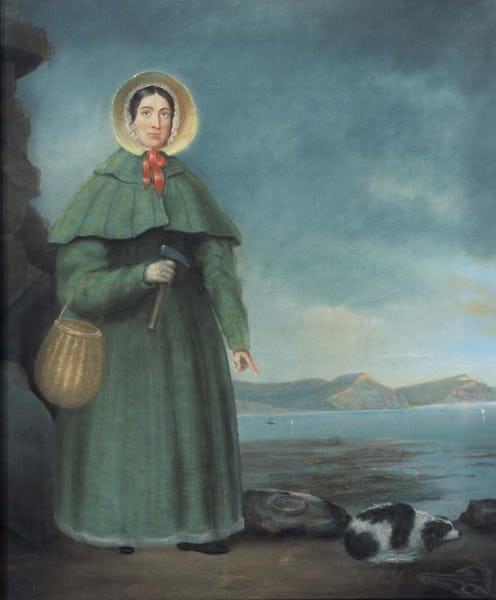Life
8 Scientific Breakthroughs Made By Women
For centuries, being a women in the STEM fields meant watching men take credit for your accomplishments. As a result, scientific breakthroughs made by women are often attributed to their male contemporaries — or that old standby, "Anonymous" — in history books. Although you'd think that we would eventually start giving women credit for their work, the treatment of women in STEM remains a problem even today.
According to the 2009 census, women hold nearly half of all jobs in the U.S. economy but make up less than a quarter of the STEM workforce. Furthermore, even women who have a STEM degree are less likely than their male peers to work in a STEM occupation; instead, they're more likely to work in education or healthcare. This disparity can be traced back to many factors, but one of the most prominent is the lack of female role models in these fields.
On the bright side, that's fixed easily enough. All it takes is a little research to highlight the contributions women have made to science and technology over the centuries. With that in mind, as International Women's Day draws closer, here are eight breakthroughs and inventions you may not have realized were made by women.
Check out the “Feminism” stream in the Bustle App throughout the month of March for more inspiring ways to celebrate Women's History Month.
1Overthrowing The Law of Parity
Born in 1912 in China, Dr. Chieng-Shiung Wu immigrated to the United States prior to World War II for graduate school. Her work in nuclear physics was so well-regarded that she was asked by the Army to join the Manhattan Project. It's an accomplishment cool enough on its own, but helping design the atomic bomb isn't her most notable contribution to science.
In 1957, she and two male colleagues at Columbia University found evidence overturning a principle of physics known as the law of conservation of parity. However, her contribution to this research was overlooked, and her male coworkers received the Nobel Prize in Physics without her.
2Computer Programming
Centuries after her death, Ada Lovelace is finally starting to receive due credit for her contributions to science. The daughter of famed poet Lord Byron, Lovelace was tutored in mathematics as a child at her mother's request. In 1843, she published a translation of an article on the Analytical Engine. Included in this translation were her own notes, which laid out a new way of solving certain math problems. She also wrote about the possibility of a general computer. Overall, this has led people to describe Lovelace as the first computer programmer.
3Nerve Growth Factor
During World War II, Italian neuroscientist Rita Levi-Montalcini began studying chicken embryos in her bedroom. Years later, she and a colleague discovered a protein regulating cell growth and development; appropriately, it was called nerve growth factor (NGF). This discovery revolutionized the way scientists researched embryonic development, especially in terms of disorders of degeneration, like Alzheimer's disease, and growth, like tumors. In 1986, she was awarded the Nobel Prize in Medicine for this discovery.
4Dinosaur Fossils
Born around the turn of the 18th century, British amateur paleontologist Mary Anning grew up in poverty after her cabinetmaker father died. Before he passed away, though, he taught Anning and her brother how to hunt for fossils along the cliffs in southern Great Britain, and these skills proved to be Anning's claim to fame. Over the course of her lifetime, she helped find the first specimen of the dinosaur Ichthyosaurus known to London at the time, and she's credited with discovering the first plesiosaur skeleton. For years, however, her contributions were overlooked due to her social class and gender.
5Cataloging the Stars
Formerly a musician, Caroline Herschel took an interest in astronomy after her brother took it up as a hobby. As his passion for making telescopes grew, she apprenticed with her brother until she was ready to work on her own. In the late 1700s, Herschel and her brother found a variety of nebulae and comets, recording each of the discoveries as they occurred. According to NASA, two of these catalogues are still in use today.
6Radio Pulsars
Born in the mid-20th century, Irish astronomer Jocelyn Bell Burnell made a huge discovery during her time as a graduate student at Cambridge. In early 1968, she published a paper in Nature identifying the first known evidence of a pulsar — the signal given off by super-dense collapsed stars. Given the fate of other women on this list, it's probably no surprise that her adviser, Anthony Hewish, was awarded a Nobel Prize and she was overlooked.
7Wifi
Few people are as widely written-off as Hollywood starlets, but let the story of Hedy Lamarr teach you not to judge someone by their day job. An Austrian actress working during the "Golden Age" of Hollywood, Lamarr received a patent for the invention of a radio signaling device with her friend in 1941. They intended for the system to be used as a form of secret military communication, but over the years, Lamarr's invention has turned out to be the basis for cell phones, fax machines, and other wireless technology. In other words, Lamarr is responsible for the tech that led to wifi.
8The Earth's Inner Core
Although humans haven't actually visited the center of the Earth, we have Danish seismologist Inge Lehmann to thank for our understanding of its composition. Born in the late 19th century, Lehmann studied the data available from seismic stations around the world. In 1929, a large earthquake near New Zealand gave off some funky readings; the shock waves traveled as if they were bouncing off a boundary inside the Earth's core. In 1936, she published a paper theorizing that the planet has an inner core made of different material than the rest of the core. To this day, her findings are still widely accepted.
